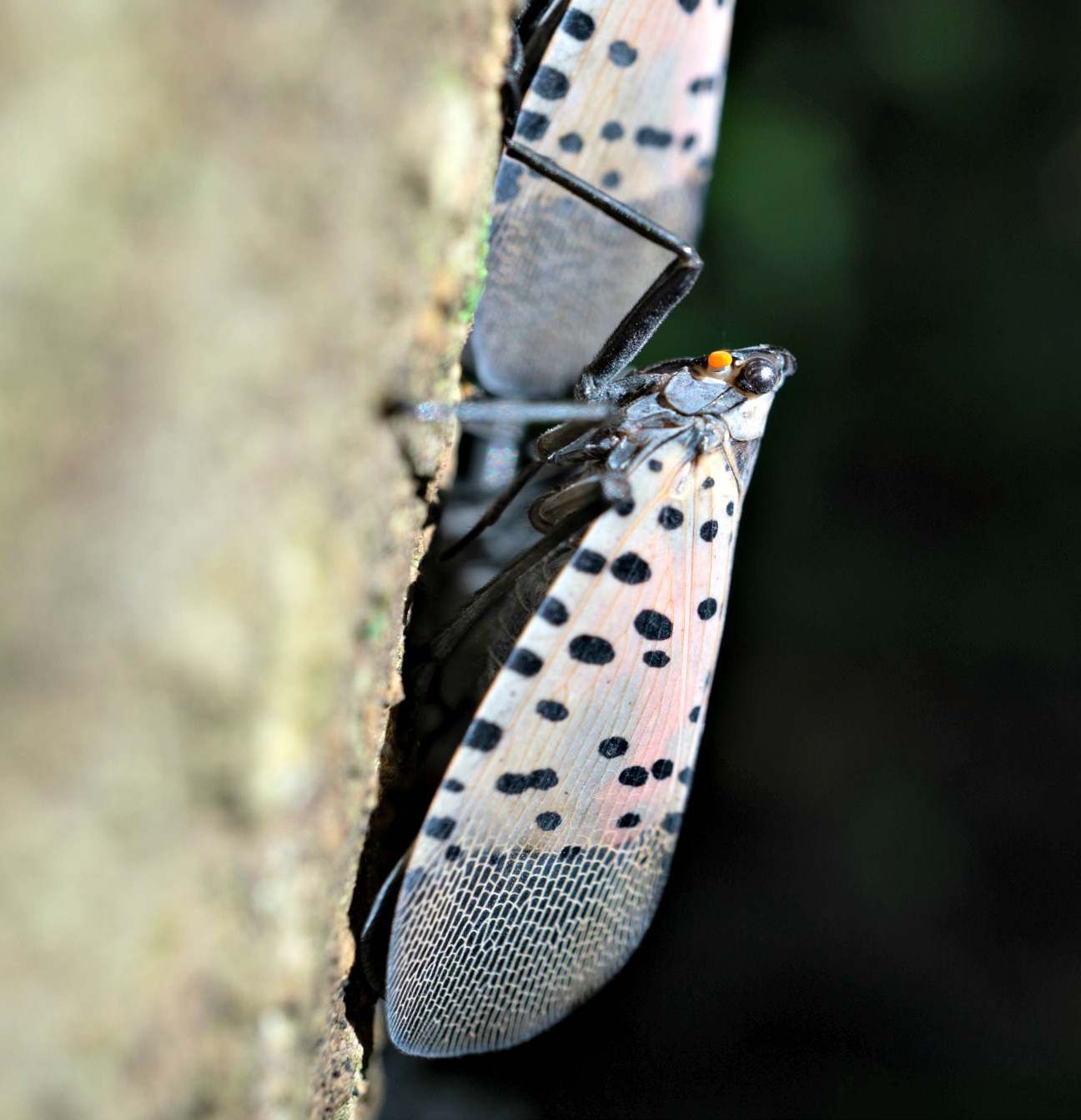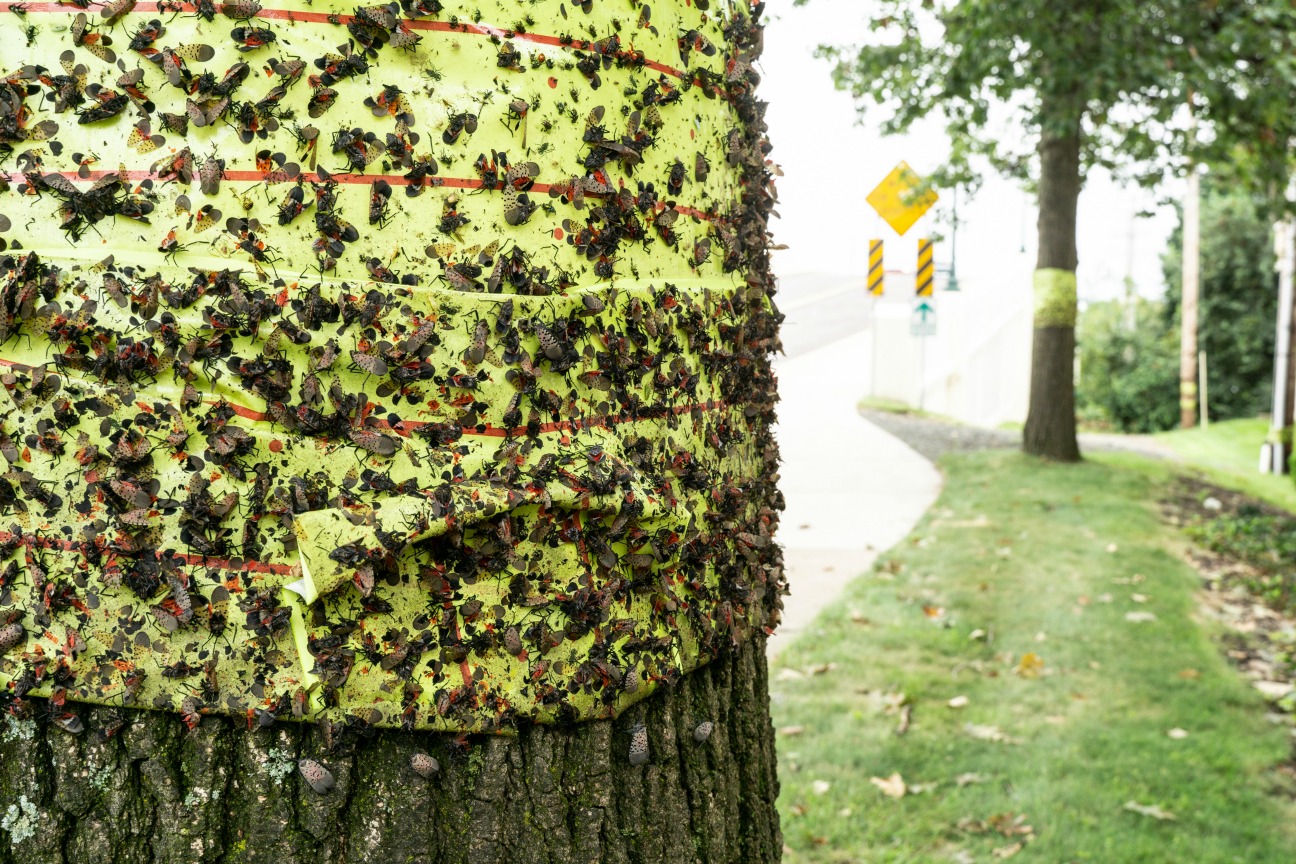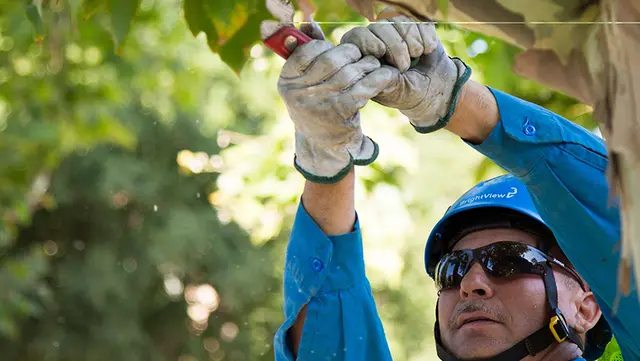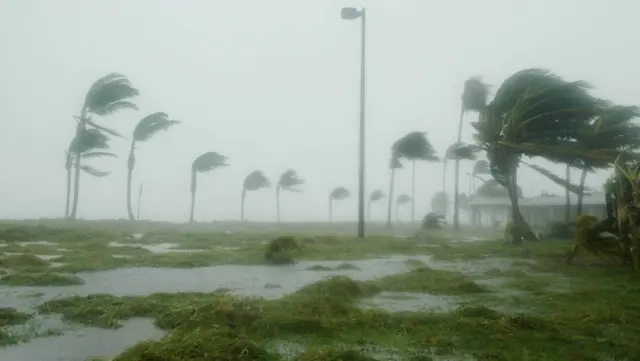
Spotted Lanternflies Have Some Properties Seeing Red
Don’t let yours be one of them

Native to Southeast Asia, the spotted lanternfly is an invasive species that first made an appearance in the United States in Berks County, Pa., in 2014. Since that time, it has been found in other parts of Pennsylvania, as well as New Jersey and Virginia. In addition to the damage it can cause to your landscape, the spotted lanternfly poses a large threat to both the ecosystem and the economy. The potential impacts are serious enough that the Pennsylvania Department of Agriculture has issued a quarantine for portions of the state to help control the insect’s movement.
How to spot the spotted lanternfly
Despite its wings, the spotted lanternfly is a planthopper, meaning it’s not a true flying insect. Measuring about 1-inch long and 1/2-inch wide at rest, the spotted lanternfly is most easily identified by its distinctive red, black, white, and grey markings on its wings. Immature spotted lanternflies — which won’t yet have red patches — are black with white spots and about the size of a pencil eraser. Once mature, it will feature grey wings with white spots and a red underwing.
The spotted lanternfly favors Alianthus (Tree of Heaven) and is also known to feed on grapevines and fruit trees. Weeping, greyish, or black wounds are a telltale sign spotted lanternflies have been feeding on your trees. Their feeding creates a sugary substance called honeydew, which attracts other hazardous pests, including ants, wasps, and yellow jackets. It also generates sooty mold, which can damage your plants and cause unsightly staining on your property.
Fall and winter is critical to preventing the spread

Spotted lanternflies lay their eggs in late fall on trees and smooth surfaces — including outdoor furniture and the wheel wells of cars. The egg masses have a grey, muddy appearance, and as they age, resemble columns of brown, seed-like deposits. If you find a spotted lanternfly or egg mass, place it in a container with alcohol or hand sanitizer, which will kill it. Report the sighting to your local department of agriculture, or call us and we can assist.
One of the best measures of prevention is to have a certified arborist evaluate your risk and prescribe an appropriate prevention and treatment plan to keep your trees and property safe. Properties with trees of heaven are most susceptible, and may want to consider removal or treatment. Our experienced tree care professionals can help you properly identify your trees and make the right choice.
Expertise from Root to Canopy
Need an Arborist consultation? Work with an experienced, safety-conscious local crew, certified arborists, and all the specialty equipment and techniques needed to keep your trees thriving.



